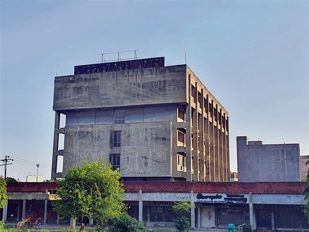
Ajit Doval. File photo
Ajay Banerjee
Tribune News Service
New Delhi, July 22
When Indian and Chinese National Security Advisers meet in Beijing next week, New Delhi will be armed with solemn treaties and old British–era maps to argue that Dolam, or Doklam, is a disputed territory.
(Follow The Tribune on Facebook; and Twitter @thetribunechd)
NSA Ajit Doval will be in China from July 27-30 for a BRICS NSAs’ meeting where he is expected to meet his Chinese counterpart and State Councillor Yang Jiechi.
The two had met briefly in July first week at Hamburg on the sidelines of G-20 summit. The Beijing meeting is being watched internationally and could set the future course in the recent military stand-off between the two nuclear-armed neighbours. It could ease the ongoing tension played through media on both sides.
New Delhi’s argument is that People’s Liberation Army of China walked into Bhutan’s territory to make a road in an area that is disputed. The Indian Army in consultation with Royal Bhutan Army is there to “help a friend”.
“A mutual withdrawal of forces is the way forward” is the sense in New Delhi.
India is expected to argue that China is going back on a commitment made in 2012 to maintain status quo at border tri-junctions. The road being built by China would change the situation at Doklam tri-junction, a point where the border was never demarcated.
Despite China citing the 1890 treaty with the British, no demarcation exists on ground and it was Beijing that vacillated on demarcation with the British and also later.
Article VI of the 1890 Sikkim-Tibet boundary treaty says Mount Gipmochi (14,300 feet high) shall be the point where Tibet and Sikkim territories converge. After the 1906 treaty of Tibet getting the Chumbi valley, China assumes Mount Gipmochi as the tri-junction. India considers Batang La to be the tri-junction, around 6.5 km north. Bhutan and China have failed to sort out the matter despite 24 negotiations since 1984.
Global Times, the mouthpiece of China’s Communist Party, today published a comment of Ma Jiali, a research fellow at the China Reform Forum think-tank. He said, “Doval’s visit may be key and would serve as an opportunity to ease India-China tensions”.
Both Doval and Yang are also the Special Representatives for India-China boundary talks. The two sides have already held 19 rounds of talks to resolve their differences.
For India, the demarcation of the 3,488-km-long Line of Actual Control, the de facto boundary, is a solution on two parameters. One is to use the watershed principle while second is on ‘present actualities’, such as the one suggested in April 1960 by then Chinese Premier Zhou Enlai.

























